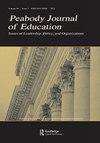介绍
Q2 Social Sciences
引用次数: 0
摘要
帕特里克·科林森教授最近在吉尔顿学院为庆祝艾琳·鲍尔的生活和工作而做的一次演讲中,将关于女性的历史写作分为悲观和乐观两种类型,一种认为女性在各个时代都受到男性的歧视,并着手记录这种压迫,另一种则认为,虽然没有尽量减少妇女不得不面对的困难,但强调她们的成就而不是失败。当教会历史学会选择“教会中的女性”作为1989-1990学年的主题时,这两个历史群体的代表似乎都可能参与这项事业。选择这个确切的主题作为一年审议的主题的主要原因是它相对新颖,尽管该学会1978年向罗莎琳德·希尔教授介绍的Festschrift对中世纪妇女的热情接待表明了人们对这个主题的广泛兴趣,也表明了研究中世纪妇女的丰富材料。希望这一主题足够广泛,既包括对教会关于女性的官方教学的讨论,牧师认为女性应该做什么和不应该做什么是合适的,也包括对女性在教会中实际做了什么的调查,例如她们作为福音传道者、宗教秩序和运动的创始人、教育工作者、慈善家,作为神职人员的赞助人,以及古老宗教习俗的保存者。虽然这一主题显然可以探索具体的女权主义问题,例如任命妇女为牧师的运动,但它并没有被认为是公开的政治性的,而是对从一世纪到今天教会中妇女活动的历史评估。这一主题所激发的卓越贡献,几乎触及了教会女性生活的所有方面,充分满足了这些期望。总的来说,关于女性历史的更乐观的写作流派往往占主导地位,尽管珍妮特·纳尔逊在她关于对加洛林时期女性言论的模棱两可反应的细致入微的文章中,引起了人们对神职人员厌女症的关注,这种厌女症有时是隐藏的,有时是公开的,几个世纪以来一直是一个主题。对于谁寻求,几乎每个本文章由计算机程序翻译,如有差异,请以英文原文为准。
Introduction
In a recent lecture he gave at Girton College to celebrate the life and work of Eileen Power, Professor Patrick Collinson divided historical writing on women into two types, the pessimistic and the optimistic, the school which believes that women have been discriminated against by men throughout the ages and sets out to document this oppression, and the other which, while not minimizing the difficulties with which women have had to contend, emphasizes their achievements rather than their failures. When the Ecclesiastical History Society selected ' Women in the Church' as its theme for the academic year 1989—90 it seemed likely that representatives of both these historiographical groups might be involved in the venture. The chief reason for choosing this precise topic as the subject for a year's deliberations was its relative novelty, although the enthusiastic reception of Medieval Women, the Festschrift presented by the Society to Professor Rosalind Hill in 1978, had demonstrated both the widespread interest in the subject and the abundance of material available for the study of women in the Middle Ages. It was hoped that the theme would be sufficiently broad to embrace both discussions of the Church's official teaching concerning women, what churchmen thought it was fitting women should, and should not do, and also investigations into what women actually did in the Church, such as their role as evangelists, as founders of religious orders and movements, as educators, as philanthropists, as clerical patrons, as well as preservers of old religious practices. While the theme could clearly allow an exploration of specifically feminist issues, such as the campaigns for the ordination of women to the priesthood, it was not envisaged as being overtly political, but rather as a historical assessment of the activities of women in the Church from the first century until the present day. The excellent contributions the theme has inspired, touching as they do upon almost all of these aspects of the life of women in the Church, have amply fulfilled these expectations. Overall, the more optimistic school of writing on women's history has tended to predominate, though Janet Nelson, in her nuanced essay on equivocal reactions to the speech of women in the Carolingian period, draws attention to clerical misogyny which, sometimes hidden, sometimes in the open, has proved such a constant motif over the centuries. For whose who seek, virtually every
求助全文
通过发布文献求助,成功后即可免费获取论文全文。
去求助
来源期刊

Peabody Journal of Education
Social Sciences-Education
CiteScore
2.20
自引率
0.00%
发文量
43
期刊介绍:
Peabody Journal of Education (PJE) publishes quarterly symposia in the broad area of education, including but not limited to topics related to formal institutions serving students in early childhood, pre-school, primary, elementary, intermediate, secondary, post-secondary, and tertiary education. The scope of the journal includes special kinds of educational institutions, such as those providing vocational training or the schooling for students with disabilities. PJE also welcomes manuscript submissions that concentrate on informal education dynamics, those outside the immediate framework of institutions, and education matters that are important to nations outside the United States.
 求助内容:
求助内容: 应助结果提醒方式:
应助结果提醒方式:


